Abstract
Spirillum lipoferum grows vigorously on malate, succinate, lactate, or pyruvate, moderately on galactose or acetate, and poorly on glucose or citrate. It reduces 15N2. Acetylene reduction rates decrease rapidly when the pH of the culture rises above 7.8. The organism is highly aerobic and had doubling times as low as 2 h when grown on NH4+. However, S. lipoferum reduces N2 well only under microaerophilic conditions. The optimal pO2 for acetylene reduction by stagnant cultures was 0.006 to 0.02 atm depending upon the cell density; aerated cultures grew well at dissolved O2 concentration corresponding to a pO2 of about 0.008 atm. Shaking S. lipoferum with air temporarily inactivates its nitrogenase; reactivation is inhibited by chloramphenicol. The organism assimilated 20 to 24 mg of N/g of organic acid oxidized during growth. The strains studied can be placed in two groups based upon their morphology and physiological characteristics.
Full text
PDF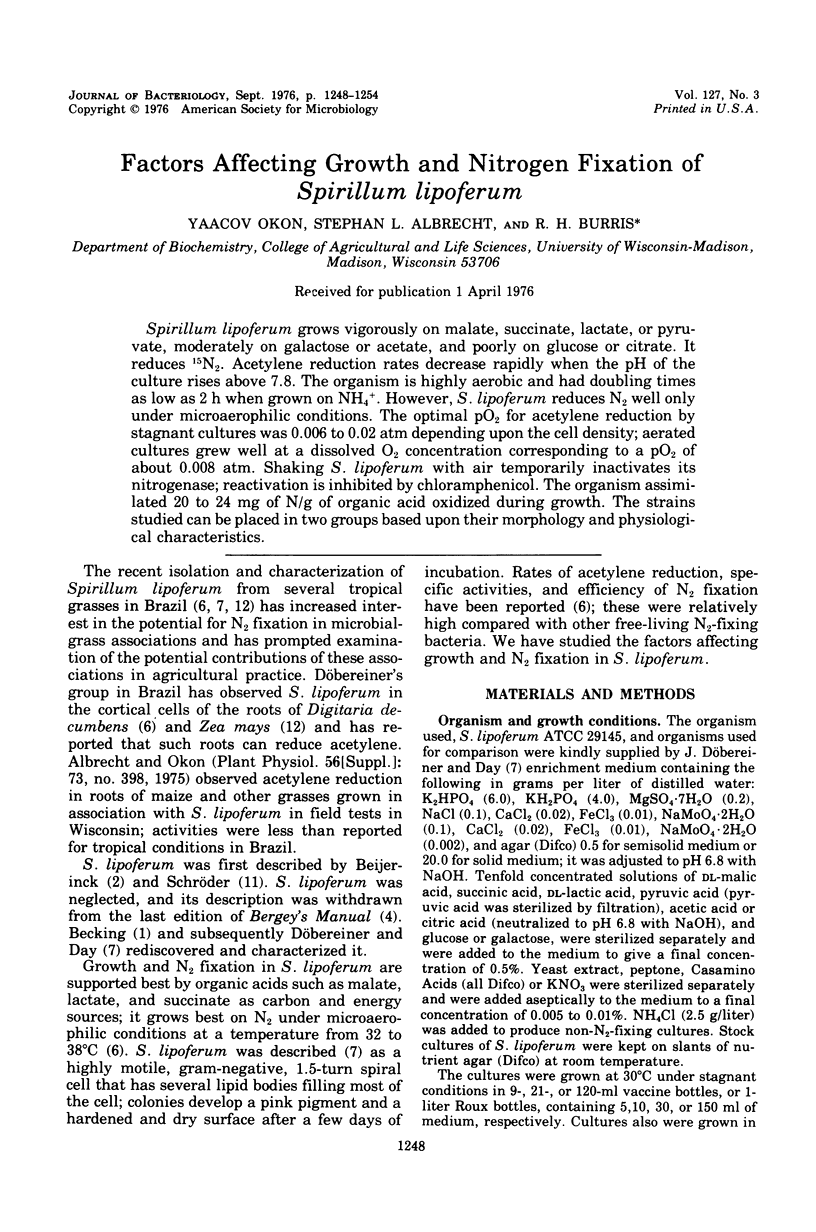
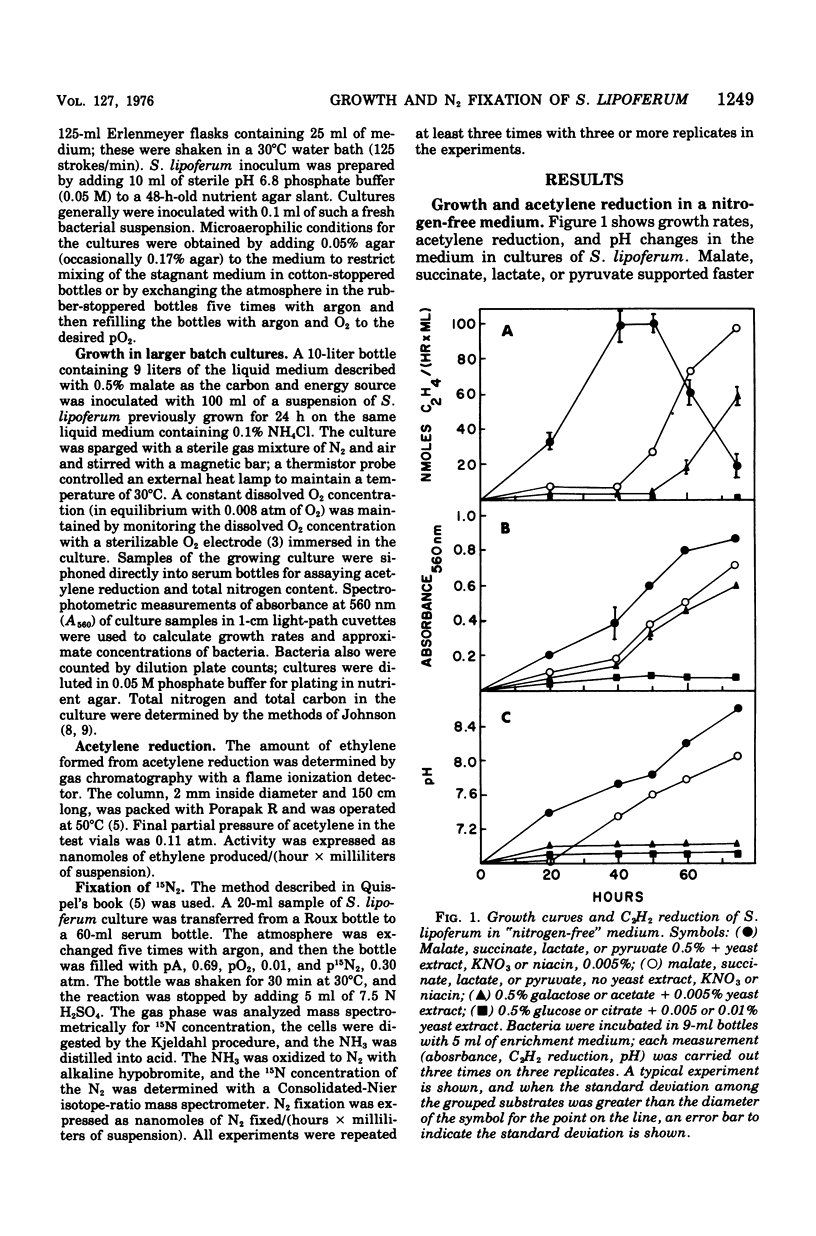
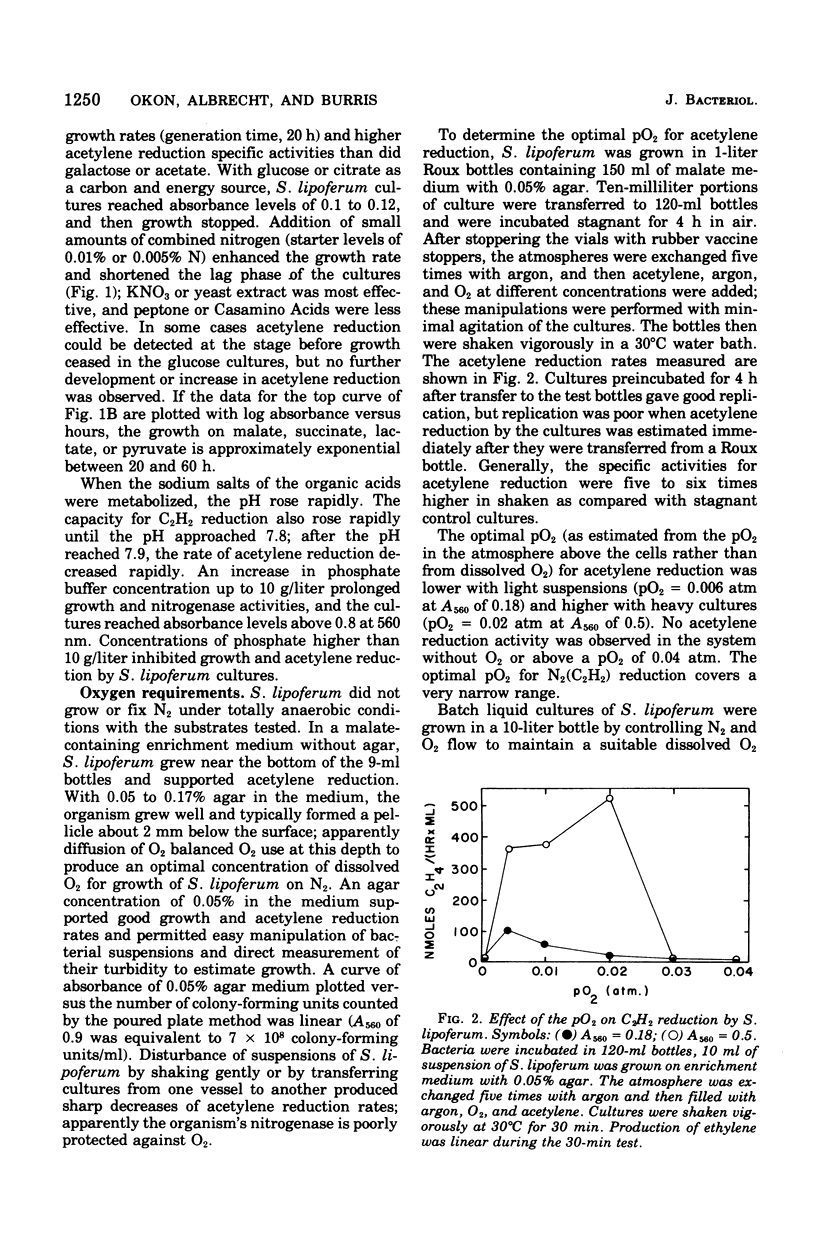
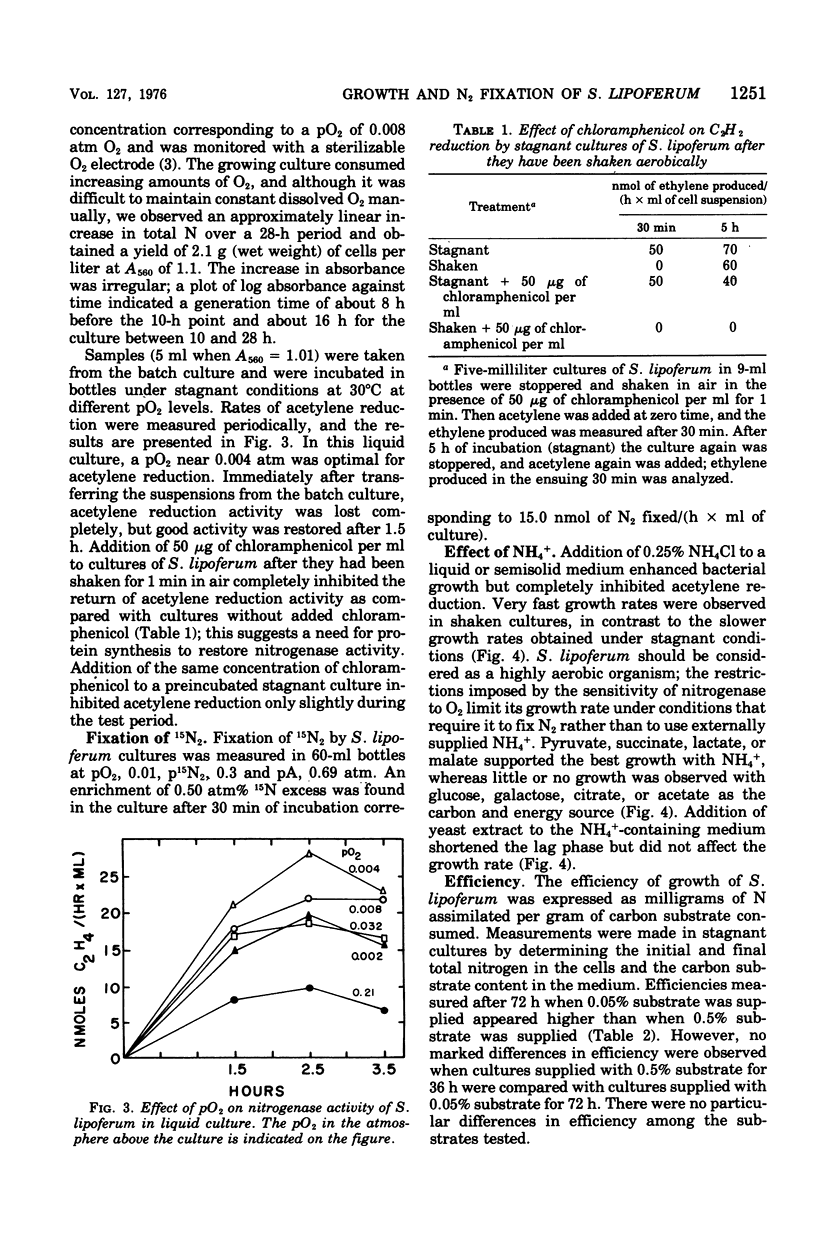
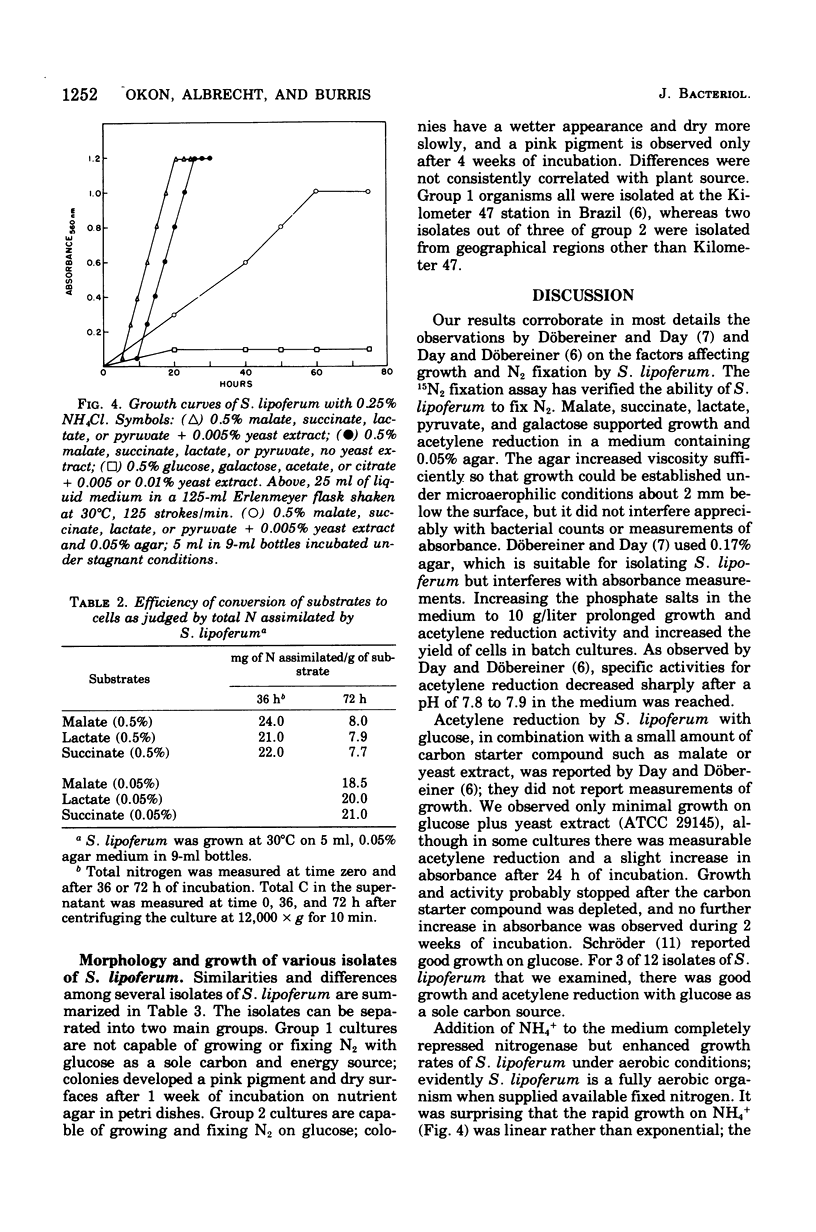
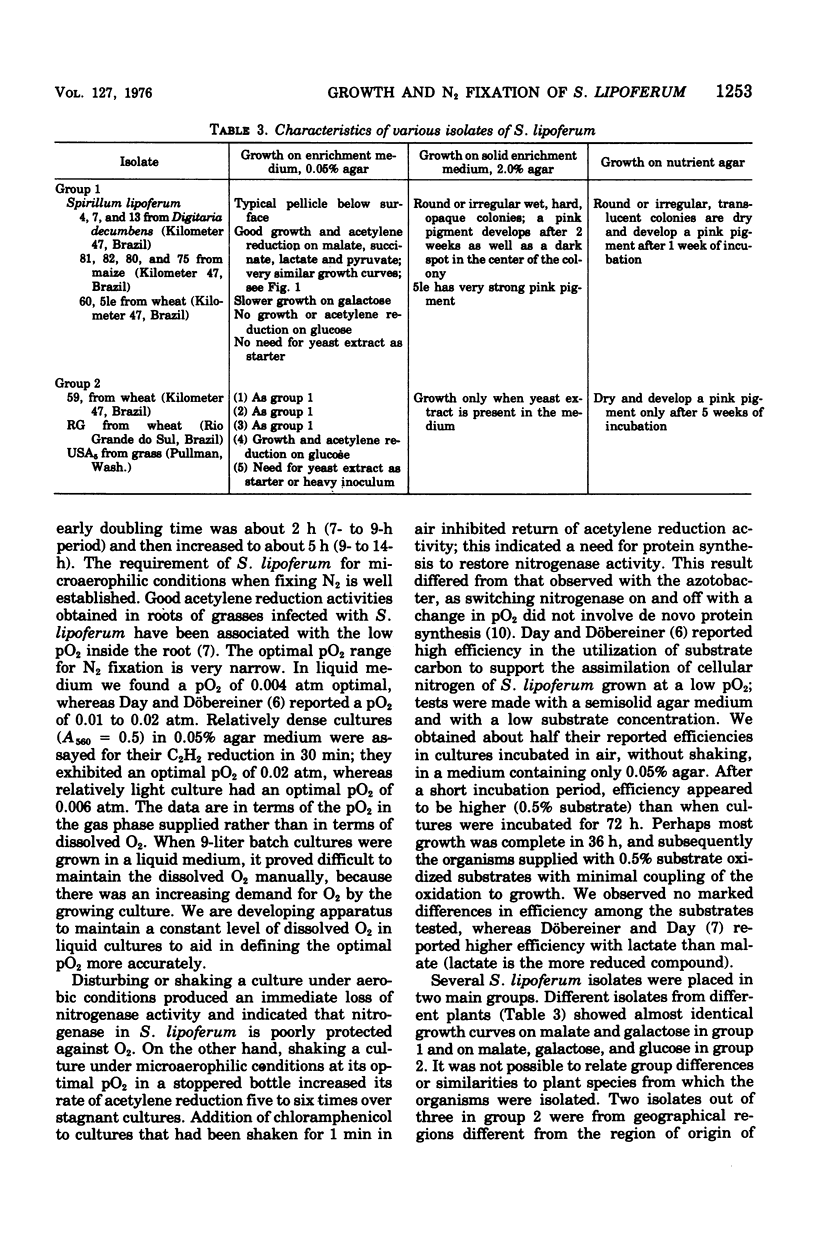
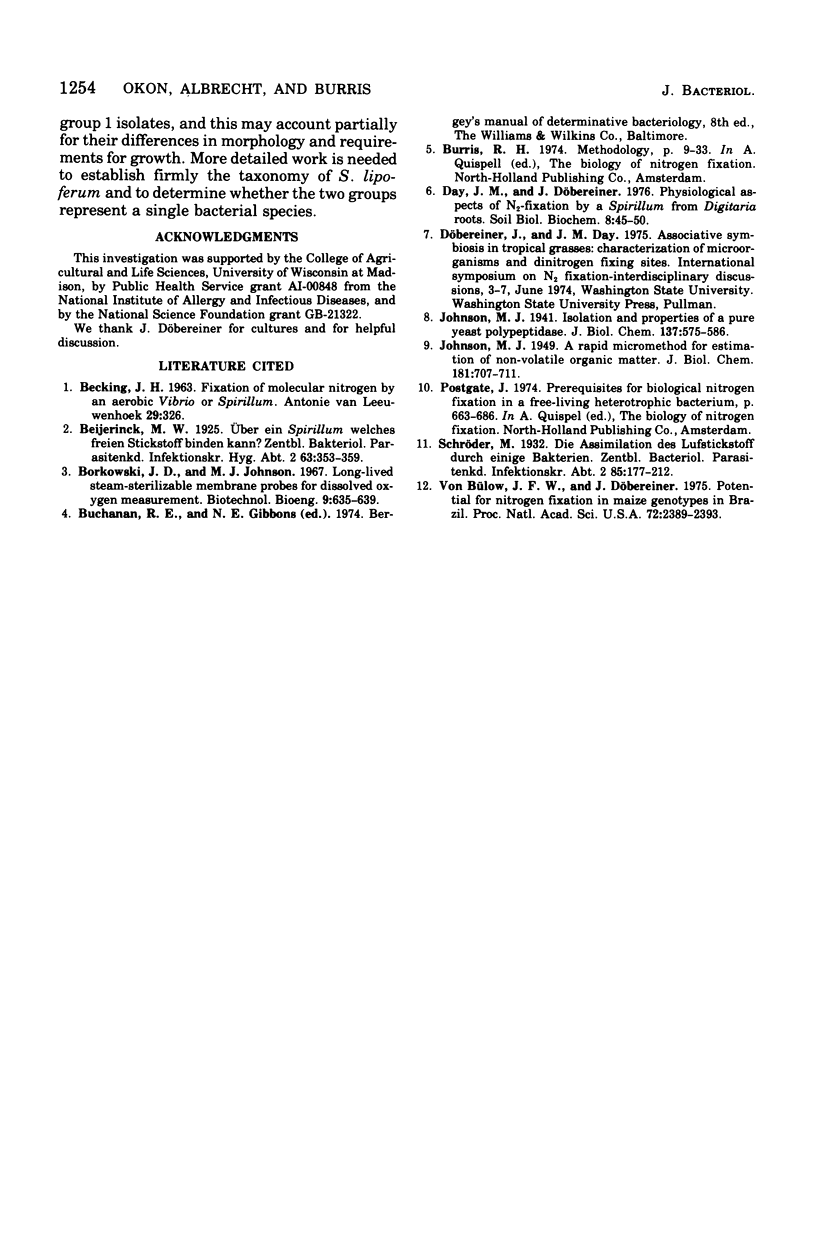
Selected References
These references are in PubMed. This may not be the complete list of references from this article.
- JOHNSON M. J. A rapid micromethod for estimation of non-volatile organic matter. J Biol Chem. 1949 Dec;181(2):707–711. [PubMed] [Google Scholar]
- Von Bülow J. F., Döbereiner J. Potential for nitrogen fixation in maize genotypes in Brazil. Proc Natl Acad Sci U S A. 1975 Jun;72(6):2389–2393. doi: 10.1073/pnas.72.6.2389. [DOI] [PMC free article] [PubMed] [Google Scholar]


